AWS Certified SysOps Administrator - Associate
Domain 1 Monitoring Logging and Remediation
AWS EventBridge Introduction
Welcome students! In this article, we explore how AWS EventBridge works, its key components, and its various use cases. AWS EventBridge—originally part of CloudWatch Events—has evolved into a fully managed event bus that receives events from multiple sources and routes them to specific targets based on predefined rules.
Event-driven architectures often need to handle external third-party calls as well as internal events within your AWS environment. EventBridge acts as a central hub that ingests these events and intelligently distributes them to targets such as AWS Lambda, Amazon SNS, or custom applications.
Key Concepts
Events can originate from various sources, including AWS services, custom applications (whether running on AWS or on-premises), and partner applications. All these events are directed to an event bus, which may be the default bus, a custom event bus, or a partner event bus. Rules associated with the bus then determine how events are processed and where they are routed.
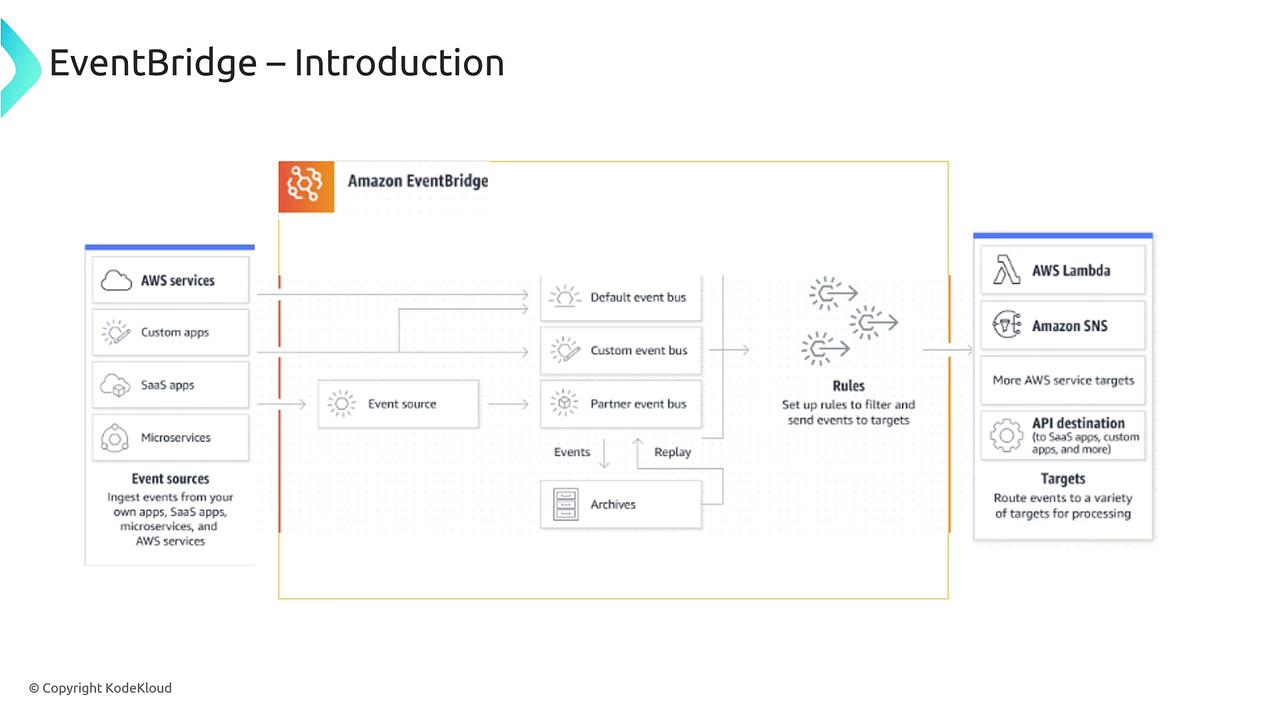
In the diagram above, observe that:
- The event source generates the event.
- The event is pushed to an event bus.
- Rules evaluate the event and route it to the appropriate target, which could be a Lambda function, an SNS topic, or another AWS service.
Components of EventBridge
Event Bus
The event bus serves as the entry point for data. It functions as a serverless data router that decouples event producers from event consumers. By ingesting data from various services and evaluating it against defined rules, the event bus routes events appropriately. This decoupling fosters improved reliability and scalability by allowing event sources and targets to operate independently.
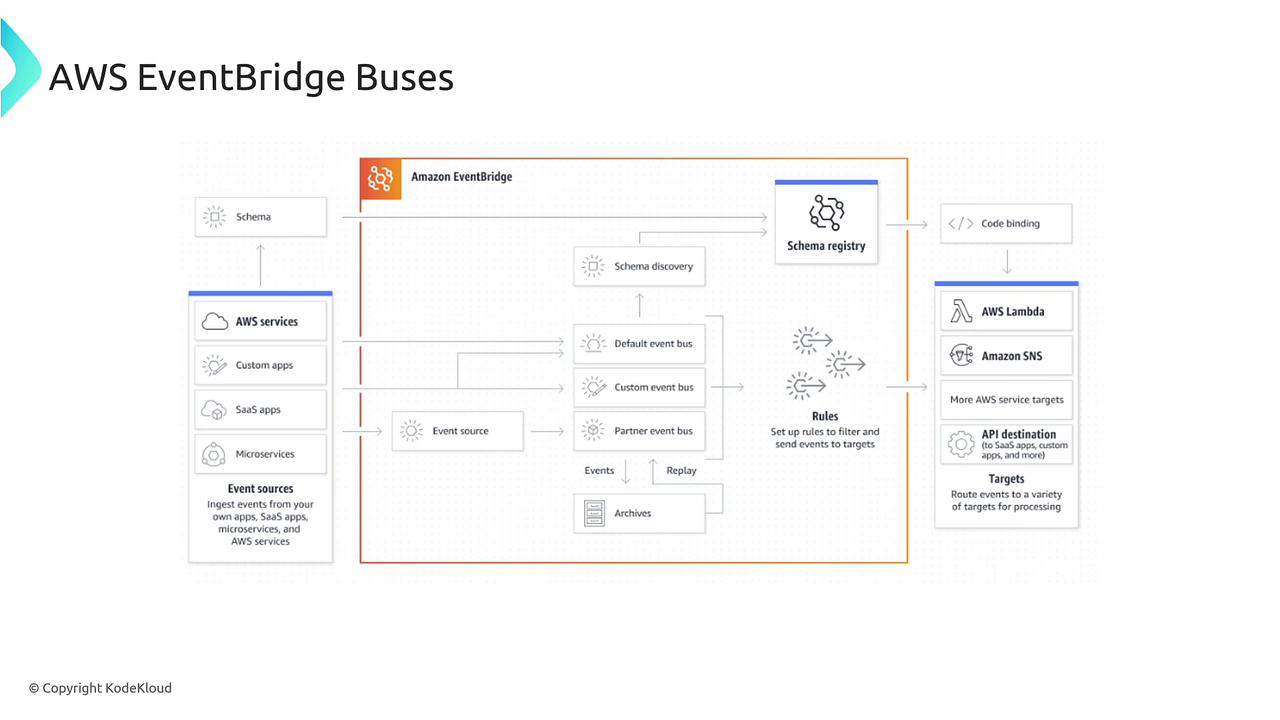
Components and Their Roles
AWS EventBridge comprises several key components:
- Event Sources: Generate events that are sent to the bus.
- Rules: Contain the logic for routing events. Rules manage retries, error handling, and enable building loosely coupled applications.
- Targets: Serve as the final destination for events where the data is processed or archived.
The diagram below illustrates the interaction between different AWS EventBridge components:
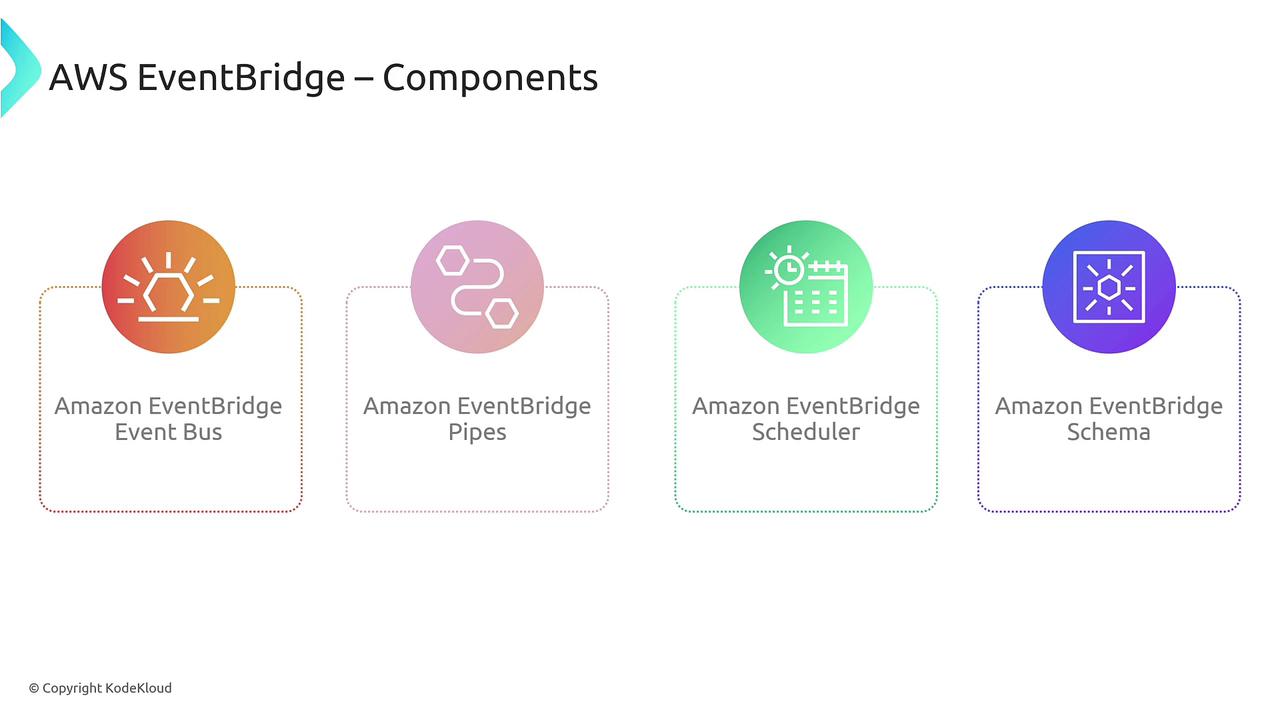
Pipes
EventBridge Pipes create point-to-point integrations between event producers and consumers. Acting as an ETL (Extract, Transform, Load) tool, Pipes can filter, transform, enrich, or modify events before sending them to their targets. This minimizes the need for extensive custom code when developing event-driven applications.
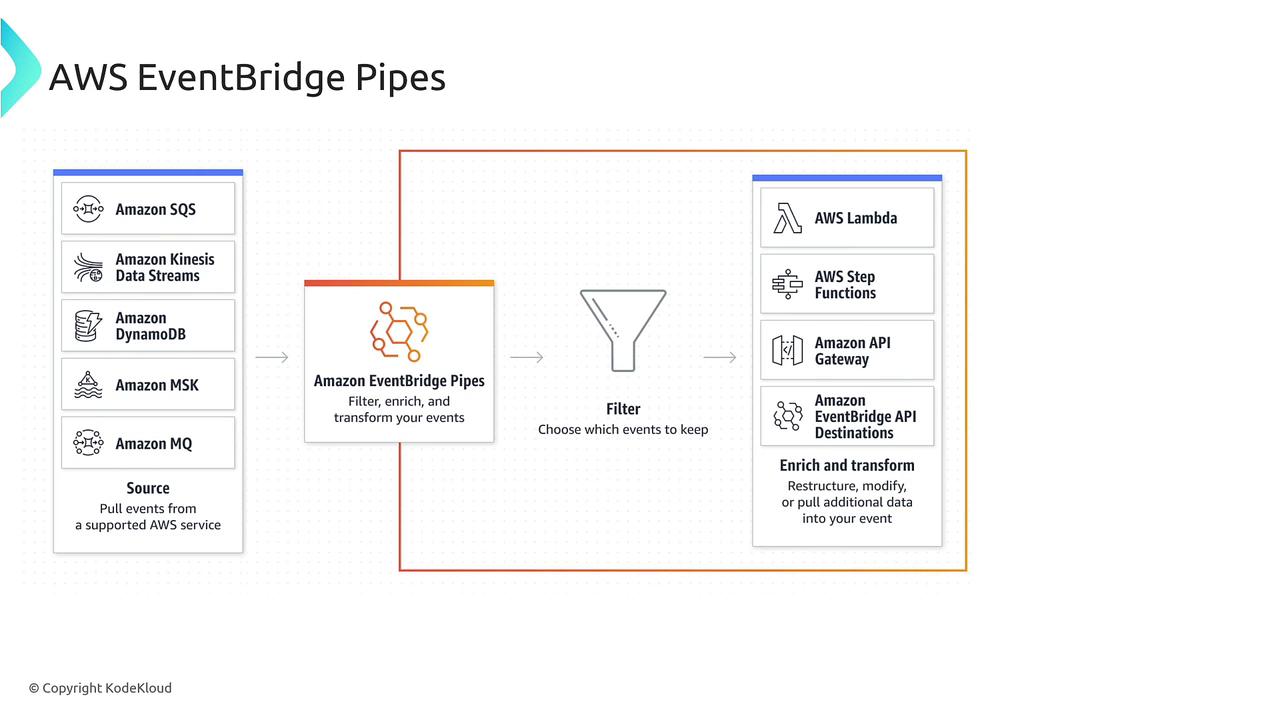
Scheduler
The scheduler in EventBridge allows you to set up scheduled tasks and events. This feature is useful for automating tasks such as Auto Scaling, sending periodic notifications, or triggering other AWS services. Schedules can be defined using cron expressions, fixed-rate intervals, or specific dates and times.

When configuring a schedule, you define the following:
- The schedule pattern (using cron expressions or fixed intervals).
- The target AWS service to receive the event.
- The payload data sent to the target.
- Retry policies, queues, and any encryption details required.
Schema Registry
The schema registry stores event schemas that act as templates detailing how data is structured and routed within your EventBridge setup. This facilitates data handling—especially in cases involving complex routing, enrichment, or retry logic. The registry is particularly valuable when working with over 200 built-in AWS services and can be extended by writing custom handlers for services beyond native integrations.
Use Cases
AWS EventBridge is versatile and supports numerous application architectures. Common use cases include:
- Third-Party Integration: Use EventBridge to build event-driven workflows that integrate with external services like Salesforce or Zendesk, such as triggering provisioning processes when a purchase occurs.
- Monitoring and Security: Automatically respond to changes detected by CloudTrail, such as unexpected modifications to firewall configurations.
- Automation and Administration: Route events to Lambda functions to automate administrative tasks, enabling real-time processing and operational efficiency.
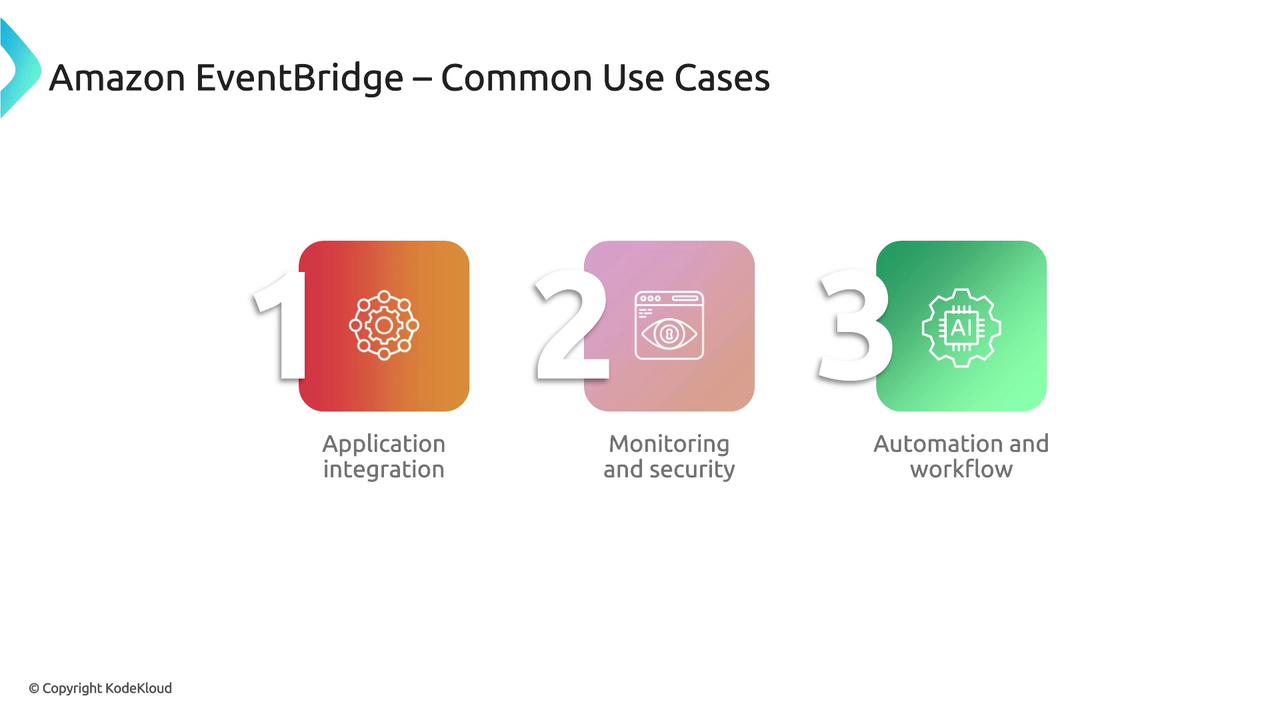
Key Insight
Using EventBridge allows you to build scalable, loosely coupled architectures that can adapt to various patterns and integrations seamlessly.
Best Practices
When designing solutions with EventBridge, keep the following best practices in mind:
- Use Event Patterns: Filter events to process only the relevant data, thereby reducing unnecessary workload.
- Segment Event Buses: Maintain distinct event buses for different sources (e.g., one for Salesforce events and another for AWS application events) to ensure clarity and enhance security.
- Monitor Your Setup: Leverage CloudWatch to track issues, performance bottlenecks, and failures in event processing.
- Implement Dead Letter Queues (DLQs): DLQs capture events that encounter processing errors. This mechanism prevents data loss and enables further review and reprocessing of failed events.
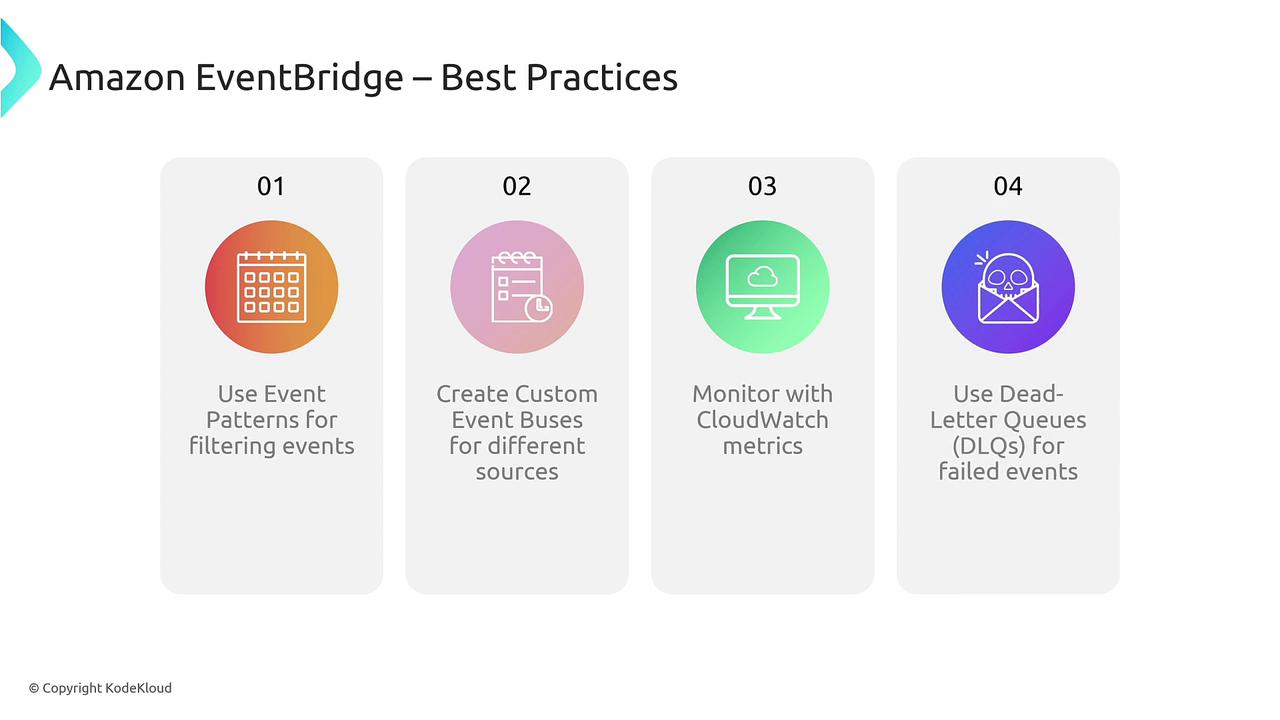
Important
Dead letter queues (DLQs) are critical for ensuring that events unable to be processed due to errors are not lost, allowing for subsequent remediation or human intervention.
Conclusion
In this lesson, we covered the fundamentals of AWS EventBridge, including its architecture and components—event bus, pipes, scheduler, and schema registry—as well as practical use cases and best practices. By integrating EventBridge into your applications, you can develop robust, scalable, and loosely coupled event-driven systems within AWS.
Thank you for reading, and we look forward to exploring more AWS services with you in future lessons.
Watch Video
Watch video content